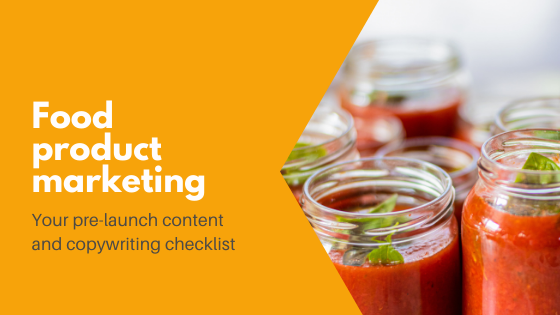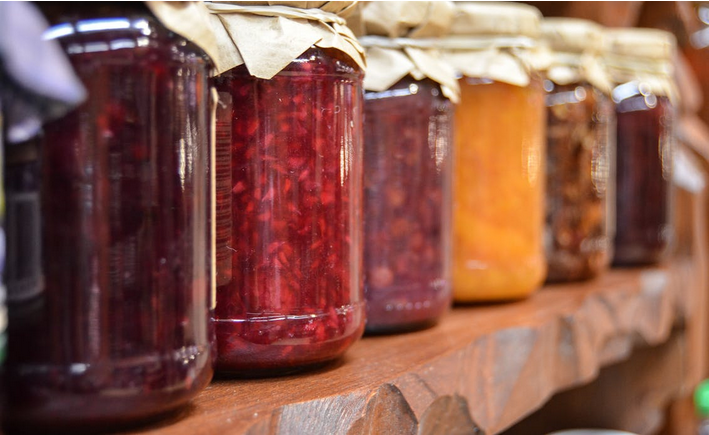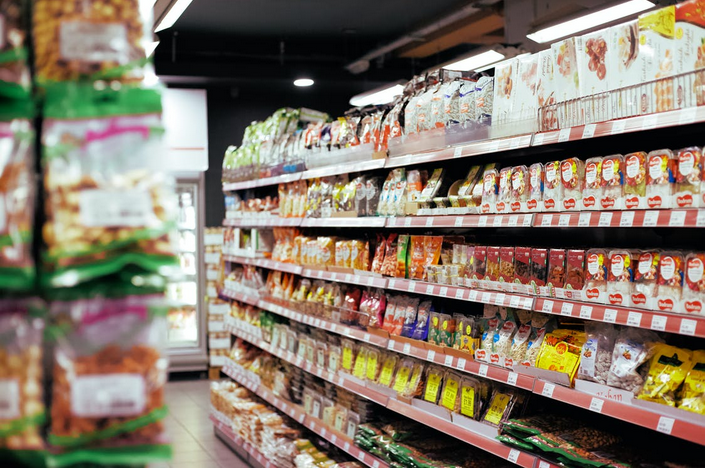Mouth-watering food copywriting has consumers craving your products.

Wondering how to market a new food product?
Whether you produce artisanal jams, specialty sauces, vinegars and oils, handmade noodles, decadent cookies or healthy snack foods—making your food and beverage products is the “easy” part of running the business.
Promoting those food products, securing your share of the market and taking your brand to the next level? That’s the hard part.
In fact, you’ve probably Googled the following at some point:
- “How to market a homemade food product?”
- “How to sell a food product?”
- “How to promote a food product online?”
These questions are the ‘hows’ that need to be addressed in order for you to get more paying customers—beyond orders from family and friends.
And these are what hobby bakers turned F&B business owners, homemade or small-scale food makers and artisan food producers struggle with.

What are some of the challenges of starting a food business?
First, the food processing industry is notoriously competitive. Consumers are spoiled for choice with tons of existing options and new products being rolled out every single day!
Second, consumers are always hungry for more. I mean, don’t we all actively search for new food products worth trying? So if you aren’t able to grab consumers’ attention from the get-go, and then win them over with taste, someone else surely will.
Third, shoppers aren’t confined to the aisles of their local supermarkets anymore. They’re increasingly online—purchasing through online retailers, directly from the food producer and even via social channels like Instagram and Facebook.
With so many distribution channels to evaluate, it can be hard to figure out the best places to increase sales. Nevertheless, it goes without saying that you need to be where your customers are. Beyond that, another thing is crystal clear: To succeed, you need appetizing marketing materials to support your food product launch.

Food product marketing: the food copywriting you need for an effective product rollout
Building a sustainable food business isn’t as simple as stepping into your kitchen, producing the item and then selling it. (I wish, right?!)
Like any other industry, there’s plenty of research involved before you even go to market.
- You will need to invest time, effort and resources into developing, tasting and testing your food products.
- You must understand your market, pinpoint who your customers would be, and examine your competition.
- And you need to be confident in who you are as a brand plus know what makes you different.
But that’s not all because to successfully promote—create awareness, garner interest and drum up sales—your new food product, you must have delectable copywriting. (These food copywriting examples are a great place to start if you’re looking for stellar ideas.)
So what should every food brand start out with? Focus your attention on essential food copywriting, which includes the following items.

Essential #1: Every food brand needs tasty web copy
Instagram and Facebook might be fine to start with (especially if the goal is to keep costs low) but eventually—ideally—you’ll want to grow your business. To do that, you’ll need to invest in a website.
A website shows customers that you’re serious about your business; you’re in it for the long-haul. It also helps people discover your brand, learn about you, explore your assortment of food products and, if you’re equipped for e-commerce, it’s where customers can buy directly from you.
But a pretty website isn’t enough. Delicious food copywriting clinches the deal!
What will you need on a food brand website? At the bare minimum:
- A home page
- Your brand story, i.e. an ‘about us’
- Product pages
- Product descriptions
- Contact information
Note: While every page matters, certain food copywriting carries more weight than others in that they’re crucial for landing sales. For example: At the end of the day, product descriptions are what convinces a reader to add to cart. So that would be more important than, say, your business’ history or a milestones timeline.
Whether you produce artisanal jams, specialty sauces, vinegars and oils, handmade noodles, decadent cookies or healthy snack foods – making your food and beverage products is the “easy” part of running the business.

Essential #2: Cash in with creative content
Awesome website? Check. Attractive photos? Check. Video clips worth sharing? Check.
But your food brand’s online presence isn’t truly complete without informative, inspiring and irresistible content that helps you rank on search engines—and whets readers’ appetites!
In other words, every food product launch needs SEO content on the side. I’m talking about yummy ideas that boost engagement and drive action.
Not sure what to start with? Why not try:
- Recipes
- Fun facts, health benefits or seasonal content
- Customer feedback and user-submitted photos
- An FAQ (if applicable)
Don’t forget to create a content strategy and plan to guide all your brand content writing efforts. It should cover details such as what you’re going to write about and when you plan to post new material. And here’s a pro tip: have a reserve of posts ready to go, so that you aren’t left to whip something up at the last minute.

Essential #3: Get shoppers craving your items with appetizing packaging copy
Eye-catching packaging is a must. But just as important as aesthetics—the visual component of your packaging— are the words that go on the box.
Two things to note about bite-sized food copywriting for packages:
- You must follow your country’s packaging (and labeling) guidelines
- You should craft mouth-watering packaging copy
Descriptive words that cover texture and flavor are always a win! But you could also choose to write about who you are as a company or the values your brand stands for.
And, of course, you’ll need nutritional information, the ingredients list, an allergen(s) notice, and best before / expiry date information among other standard requirements.
Note that depending where you live (and plan to sell your products), you might be subject to regulation governing how you describe your products. For example: You might have to say “vanilla-flavored” rather than “vanilla” if your product doesn’t actually contain a substantial amount of vanilla in it.

#4: Whip up a tempting email marketing opt-in
An email list helps you keep in touch with past, present and potential customers. It’s also how you’ll share valuable goodies like promotional codes for use on your website. But getting people to sign up for your emails isn’t all that easy. That’s why you’ll need to craft a compelling offer that gets readers excited to share their email address with you.
To summarize, here’s your just-for-starters food content and copywriting checklist
✅ Web copy: home page, brand story, product pages, product descriptions
✅ Content: recipes, fun facts, health benefits, seasonal content, FAQ
✅ Packaging copywriting: accurate, attractive, appealing product information
✅ Email opt-in: a compelling offer with a stirring call to action